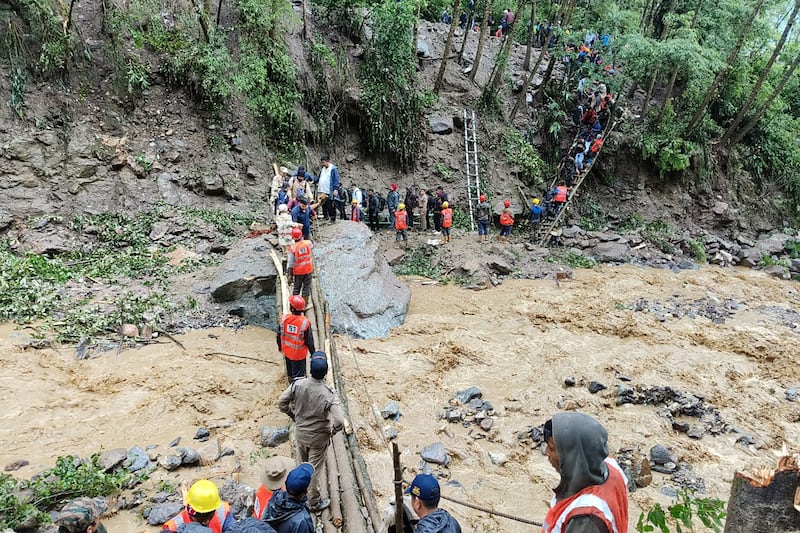At least 40 people were killed after a glacial lake burst its banks and triggered flash floods this week in the Indian Himalayas, government officials said on Friday, as rescuers searched for dozens missing for a second day.
The Lhonak Lake in the mountainous northeastern state of Sikkim overflowed on Wednesday after a cloudburst triggered torrential rains and an apparent avalanche, causing major flooding in the Teesta river.
It is one of the worst disasters in the region in more than 50 years and the latest in a series of extreme weather events that have caused widespread damage in south Asia’s Himalayas in recent years, blamed by scientists on climate change.
Authorities in Sikkim said the latest disaster, which came ahead of a popular festive and tourism season in the scenic state, had impacted the lives of 22,000 people.
Scientists and government authorities were working on an early warning system for glacial floods at Lhonak Lake, which could have given people more time to evacuate if fully operational, officials involved in the project told Reuters.
Sikkim officials had put the death toll at 18 on Thursday evening. Officials in the neighbouring downstream state of West Bengal told Reuters that emergency teams recovered another 22 bodies that had been washed away.
An estimated 75 people were still missing.
“Water levels have receded in some areas but north Sikkim has been totally cut off. Relief teams are unable to reach the affected areas there,” Tseten Bhutia, a state official, told Reuters by telephone. Mobile and landline phone networks were not working in the area, he added.
About 2,400 people have been evacuated so far and 7,600 people were in relief camps, the official said. Private and government institutions have been closed in the area until October 15th.

Fifteen bridges had been washed away in the state, hampering rescue operations. All bridges downstream of a hydropower station have either been submerged or washed away, the Indian government said.
Photos and videos on social media showed roads and pathways covered with silt and stones, vehicles stuck and small, muddy streams flowing by hillsides.
The army said it is planning to evacuate nearly 1,500 stranded tourists using helicopters as weather in the region improves.
Military equipment, including firearms and explosives, was washed away in the Teesta river, a defence ministry spokesperson said in a social media post.
One mortar shell was picked up by people in a neighbouring district in West Bengal state which later exploded, reportedly killing one child and injuring six people.
The weather department said Sikkim received 101mm (four inches) of rain in the first five days of October, more than double normal levels, unleashing floods worse than one in October 1968 in which an estimated 1,000 people were killed.
Heavy rain is forecast in parts of the region on Friday but the intensity of showers is likely to ease, the India Meteorological Department said.
Sikkim, a small Buddhist state of about 650,000 people which is wedged in the mountains between Nepal, Bhutan and China, has been cut off from Siliguri in West Bengal as the main highway, which links it to the rest of the country, had collapsed. – Reuters














